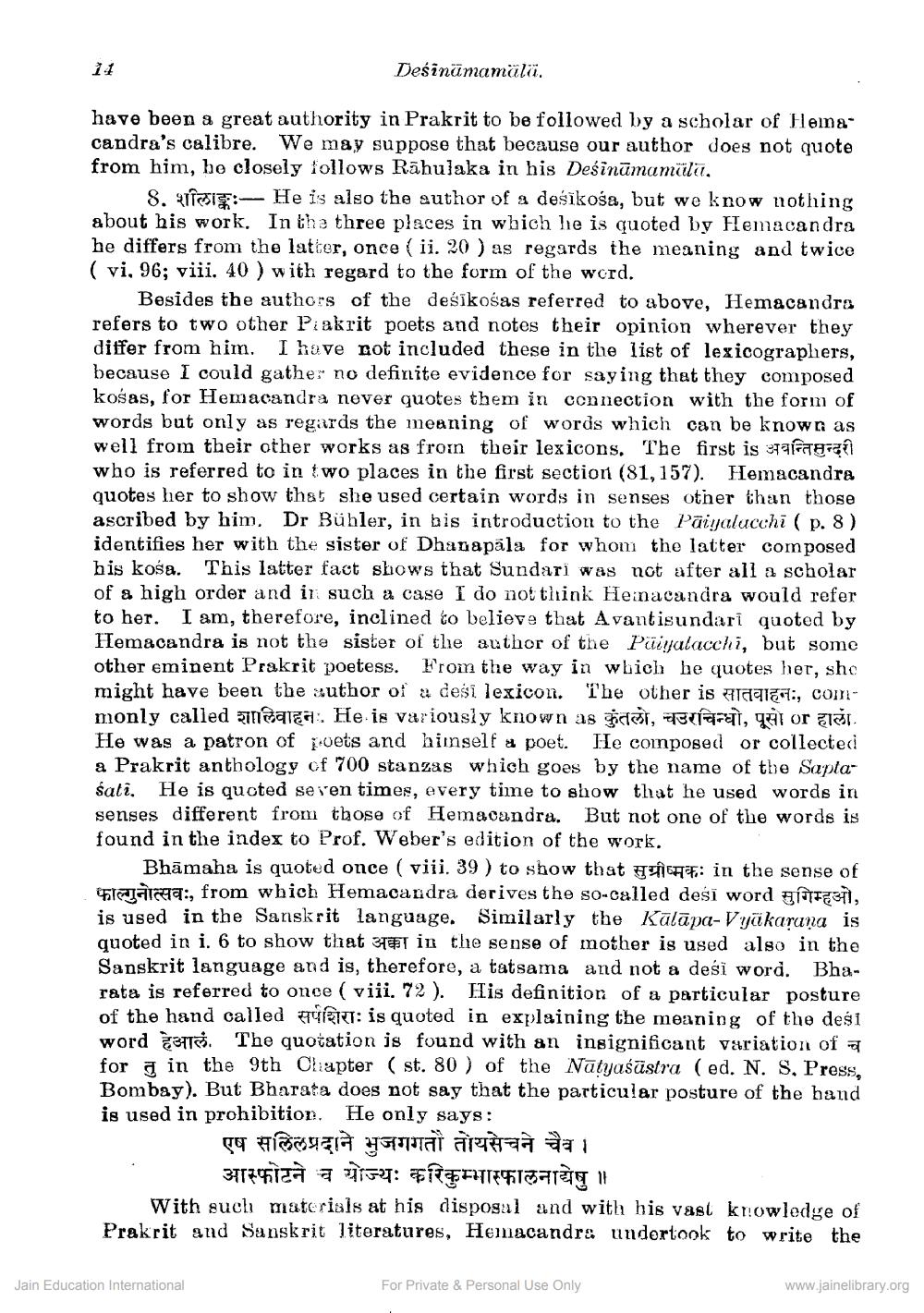________________
14
Desinämamälä,
have been a great authority in Prakrit to be followed by a scholar of Hema candra's calibre. We may suppose that because our author does not quote from him, he closely follows Rahulaka in his Desināmamälu.
8. He is also the author of a desikosa, but we know nothing शीलाङ्कःabout his work. In the three places in which he is quoted by Hemacandra he differs from the latter, once ( ii. 20) as regards the meaning and twice. (vi. 96; viii. 40) with regard to the form of the word.
Besides the authors of the dešikosas referred to above, Hemacandra refers to two other Prakrit poets and notes their opinion wherever they differ from him. I have not included these in the list of lexicographers, because I could gather no definite evidence for saying that they composed. kosas, for Hemacandra never quotes them in connection with the form of words but only as regards the meaning of words which can be known as well from their other works as from their lexicons. The first is saferał who is referred to in two places in the first section (81,157). Hemacandra quotes her to show that she used certain words in senses other than those ascribed by him. Dr Bühler, in bis introduction to the Paiyalucchi ( p. 8) identifies her with the sister of Dhanapäls for whom the latter composed his koss. This latter fact shows that Sundari was not after all a scholar of a high order and in such a case I do not think Hemacandra would refer to her. I am, therefore, inclined to believe that Avantisundari quoted by Hemacandra is not the sister of the author of the Paiyalacchi, but some other eminent Prakrit poetess. From the way in which he quotes her, she might have been the author of a desi lexicon. The other is raag, com monly called शालिवाहन. He is variously known as कुंतलो चउरचिन्धो, पूसो or हाली. He was a patron of poets and himself a poet. He composed or collected a Prakrit anthology of 700 stanzas which goes by the name of the Sapla sali. He is quoted seven times, every time to show that he used words in senses different from those of Hemacandra. But not one of the words is found in the index to Prof. Weber's edition of the work.
Bhamaha is quoted once (viii. 39) to show that gs: in the sense of फाल्गुनोत्सव:, from which Hemacandra derives the so-called desi word सुगिम्द्ओ, is used in the Sanskrit language. Similarly the Kalapa-Vyakarana is quoted in i. 6 to show that s in the sense of mother is used also in the Sanskrit language and is, therefore, a tatsama and not a desi word. Bharata is referred to once (viii. 72). His definition of a particular posture of the hand called : is quoted in explaining the meaning of the desi worden. The quotation is found with an insignificant variation of for in the 9th Chapter (st. 80) of the Nutyasüstra (ed. N. S. Press, Bombay). But Bharata does not say that the particular posture of the hand is used in prohibition. He only says:
एष सलिलप्रदाने भुजगगतौ तोयसेचने चैव । आस्फोटने च योज्यः करिकुम्भास्फालनायेषु ॥
With such materials at his disposal and with his vast knowledge of Prakrit and Sanskrit literatures, Hemacandrs undertook to write the
Jain Education International
For Private & Personal Use Only
www.jainelibrary.org




